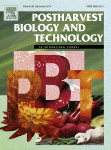Ver ítem
- xmlui.general.dspace_homeCentros Regionales y EEAsCentro Regional Entre RíosEEA ConcordiaArtículos científicosxmlui.ArtifactBrowser.ItemViewer.trail
- Inicio
- Centros Regionales y EEAs
- Centro Regional Entre Ríos
- EEA Concordia
- Artículos científicos
- Ver ítem
Metabolic profiling and quality assessment during the postharvest of two tangor varieties subjected to heat treatments
Resumen
Citrus growth and export are one of the most important agroeconomical activities in regions with
Mediterranean-like climates. Among them, tangors in particular are appreciated by their sweet taste and delicate
palatability. The current study describes the analysis of the metabolome of two tangor (Citrus reticulata×C.
sinensis) cultivars, Murcott and Ellendale, broadly cultivated in Argentina and other countries, after heat
treatment and postharvest
[ver mas...]
Citrus growth and export are one of the most important agroeconomical activities in regions with
Mediterranean-like climates. Among them, tangors in particular are appreciated by their sweet taste and delicate
palatability. The current study describes the analysis of the metabolome of two tangor (Citrus reticulata×C.
sinensis) cultivars, Murcott and Ellendale, broadly cultivated in Argentina and other countries, after heat
treatment and postharvest storage. This investigation intended to shed light on the biochemistry behind some
observed differences in the fruit of both cultivars, such as a distinctive response to cold storage. The differential
response to heat treatments and their effectiveness for preventing fungal infection was also evaluated.
Metabolite profiling carried out using several chromatographic techniques and differential methods allowed to
comprehensively compare the levels of sugars, organic acids, amino acids, polyalcohols, phenylpropanoids and
phospholipids among varieties. It was found that Ellendale possess lower content of turanose and melibiose,
higher levels of putrescine, unsaturated fatty acids, ribonic and propionic acids, as well as a remarkably higher
level of hesperidin than Murcott. After heat treatment, Ellendale was less prone to pathogen development during
storage than Murcott. The results, analyzed in terms of the differential metabolome response between the two
varieties, hint at a better competence, boosted by heat treatment, of Ellendale to withstand biotic and abiotic
stress conditions.
[Cerrar]

Autor
Moreno, Alejandra Soledad;
Perotti, Valeria Elisa;
Margarit, Ezequiel;
Bello, Fernando;
Vazquez, Daniel Eduardo;
Podesta, Florencio Esteban;
Tripodi, Karina Eva Josefina;
Fuente
Postharvest biology and technology 142 : 10–18. (2018)
Fecha
2018
ISSN
0925-5214
Formato
pdf
Tipo de documento
artículo
Palabras Claves
Derechos de acceso
Restringido
 Excepto donde se diga explicitamente, este item se publica bajo la siguiente descripción: Creative Commons Attribution-NonCommercial-ShareAlike 2.5 Unported (CC BY-NC-SA 2.5)
Excepto donde se diga explicitamente, este item se publica bajo la siguiente descripción: Creative Commons Attribution-NonCommercial-ShareAlike 2.5 Unported (CC BY-NC-SA 2.5)

